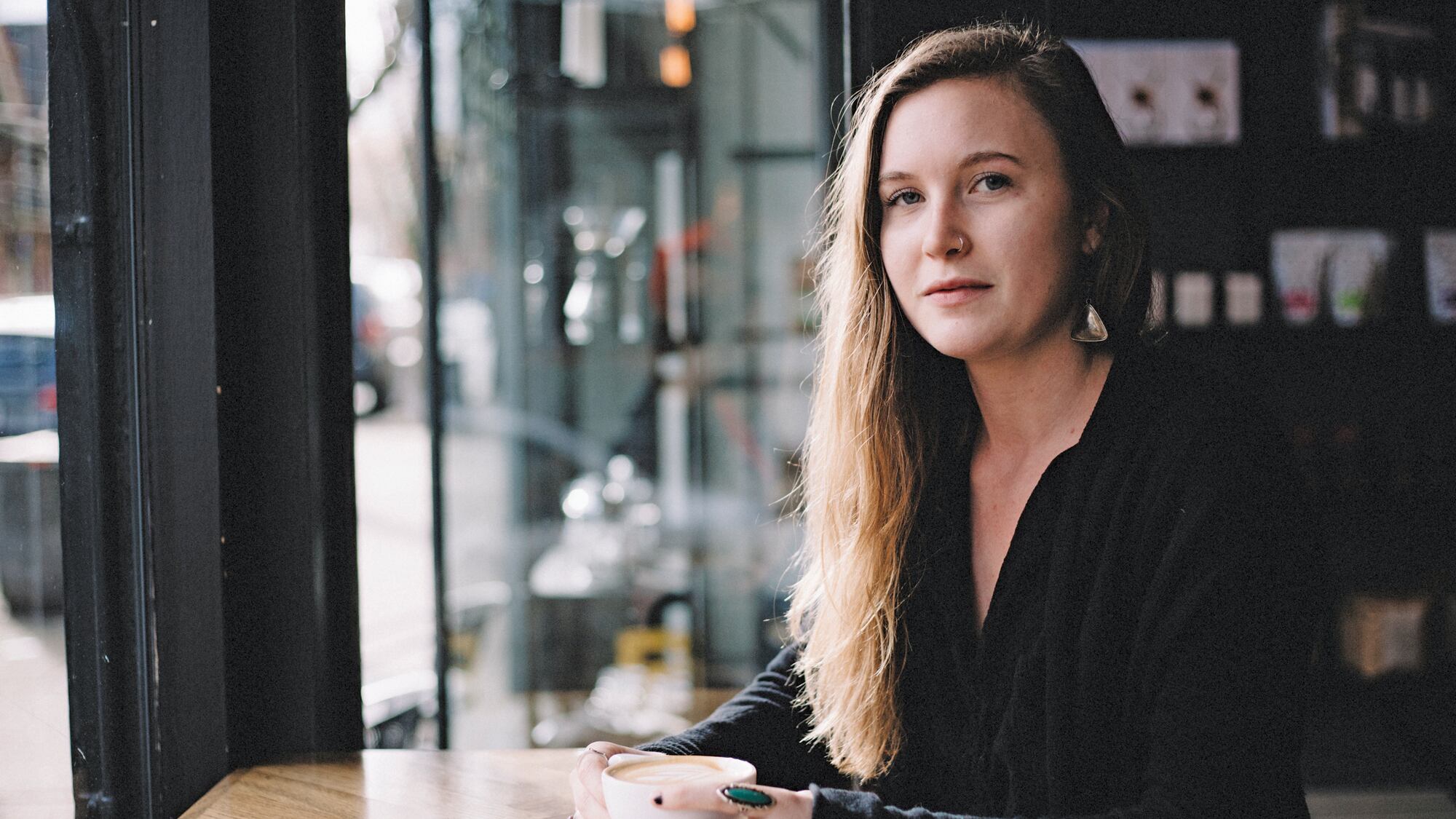My finger bled as I steadied my phone for the perfect photo.
I was on the floor of my living room, getting clawed by my cat, Simon.
I had tied a floral scarf to Simon's head like a bonnet. He hated it. He was biting ferociously at the bow tied under his chin. I clicked the shutter on my phone as he lunged at my hand, snapping a blur of nose and whiskers.
It was worth it. I was going to be famous.
A week ago, you couldn't find my Instagram account. It was set to private.
The thought of people I don't know scrolling through the poorly shot snaps of my life makes me uncomfortable. If I don't know you in real life, my thinking goes, why would you care about the hike I went on last weekend?
That's why the rising tide of Instagram influencers—people making a living from hypercurated shots of their personal lives—is both fascinating and completely foreign to me.
With my meek 305 followers and average of 15 likes per post, I'm not on the radar of any marketer doling out swag. And I'm not particularly cool, stylish or good at photography.
So those were drawbacks. But I was willing to learn.
To understand what skills are needed to quit my day job and make a living posting photos of lattes and sunsets, I reached out to five local experts.
These influencers were surprisingly willing to teach me their ways.

Step One: Be Fresh
"Nice photography isn't enough," explains Thomas Guy (@thomasguy on Instagram). "Doing something cool that other people aren't doing or setting a new trend is typically how you build up a following."
Guy's account certainly has nice photos. His 106,000 followers have attracted Alaska Airlines, which gave Guy a free trip to Minneapolis for a weekend of "showing off what the city is like."
Guy, who lives in Portland and works as a design director for Nike, got on the 'Gram early. He signed up for an account in 2010, when the platform first launched, and landed a feature on the app's "suggested user" list.
He says my first step is to find a niche that none of the app's roughly 800 million users has yet filled.
His advice for picking my niche was just to choose something I genuinely enjoy. And, he added, "play up your persona."
Step Two: Draw People In
Joseph Watrous (@gemini_digitized) takes nature shots. He travels from sunflower farms in California to national parks in Utah, and is paid by a tripod company and photo filter app. He has 165,000 Instagram followers. But on a drizzly afternoon last week, he was outside St. Rose of Lima Catholic Church in Portland's Hollywood neighborhood, teaching me how to shoot.
Watrous tried to teach me to "see like a photographer." Which meant finding "leading elements," like stairs or rivers or streets, for viewers' eyes to follow.
"The key is finding unique versions of 'same old' scenes," he says.
He tried helping me photograph the church for practice. I pointed out the building's arched windows—a nice architectural element, Watrous agreed, before commandeering my phone. He said the front stairs and arches were in fact the leading elements, and he crouched down low to get them in the frame.
Watrous doesn't normally shoot city scenes, he says, because nature 'Gramming is really about "scene exploration" and "showcasing Mother Nature's beauty." In the end, I decided that an old Forest Park photo in my phone would do.
I followed his Instagram's example. I captioned my photo with a gooey nature quote ("The world is mud-luscious and puddle-wonderful" —E. E. Cummings), used his favorite color filter (Ludwig) to increase the picture's contrast, threw in a few emojis (a tree, sparkles and raised hands) and copied a few of his hashtags (#travelstoke, #awesomeearth, #portland, #forest, #hiking, #pnw).
The post got 14 likes. I still had some work to do.


Step Three: Tag, Tag, Tag
Influencers must become intimately acquainted with hashtags to be successful. Tags are much more than pithy add-ons to posts.
Jen Stevenson of @jenlikestoeat, a food-dedicated Instagram account with more than 12,000 followers, told me that exploring hashtags is a good first step toward identifying and connecting with my "niche community."
"Pick something you're interested in," she says, "and see what people are tagging. I use hashtags to find out where is everybody hanging out?"
Stevenson, whose day job is food and travel writing for the magazine 1859, advised that I save every relevant hashtag I come across so I can add them to my posts later on.
This will increase the probability that my photo is seen and reshared on a larger feed.
Choose your hashtags wisely, she adds: "You only get 30."
I met Stevenson at Vivienne—a Northeast Sandy Boulevard breakfast spot that makes her list of places with pretty food. There she gave me a crash course in food Instagramming.
No matter where I'm eating, she advised, get to the restaurant early to get a seat next to the window where the light is best. Sometimes, she added, getting the perfect shot means putting a plate of food on the floor because the backdrop is better, or standing on a chair to get the right angle, or buying a pocket-size spotlight for illumination in dimly lit restaurants.
I should rotate the meal as I shoot, so that the light hits different food groups equally. I should use the same Instagram filter to edit every photo, for continuity. She likes Clarendon.
Most importantly, she says, I better be tenacious (and OK with eating cold food).
"There's definitely a culture of food-picture-shaming," she told me, adding that she's heard plenty of "rude comments" from diners annoyed by her techniques. "But unless my elbow is in their plate," she says, "it's none of their business."
My breakfast arrived. I held my iPhone up high to get a photo. Right away, Stevenson advised me to turn the plate so that the light would hit the egg yolk better. Then she moved the handle of my coffee cup, the handle of the salt container and the flower vase so that everything lined up perfectly.
Time for a caption. "You only get three lines," she advises. "Just write exactly what's on the plate." My caption read, "Cream biscuit with rosemary butter and strawberry jam with baked egg and a wee salad at @viviennepdx," and ended with Stevenson's favorite emoji: a fried egg in a skillet.
This post got 37 likes and five comments. My mom accidentally commented "fancy" three times.


Step Four: Every Picture Tells a Story
Kelsey Rodas (@rustyrodas) has dedicated her feed to her golden retriever, Rusty, a rescue dog. In five years, Rodas, who lives in Hood River and is an accountant, has gained more than 100,000 followers.
Good Instagramming, Rodas says, takes committing to a larger story or theme. "I wanted to write about Rusty being a rescue dog and about kindness and positivity," she says.
It also involves putting Rusty in turtlenecks and glasses and posing him like he's reading a book or typing on a laptop.
Rodas reaches out to companies she likes and says if they'll give her free stuff, she'll put it on Instagram. She just got a $2,000 couch from AllModern because she posted a picture of Rusty on it.
I don't have a dog. Rodas advised I make a trip to the shelter and get one.
"Find a unique-looking mixed breed that nobody has ever seen," she said. Then she reconsidered: "If you only want a dog only to be Instagram-famous, maybe you shouldn't get one." I decided to use my cute-enough cat, Simon, as a stand-in.
I was able to get one clear shot of my cat.
This post got 36 likes, and three comments. Progress!


Step Five: Make the Personal Public
Jade Sheldon (@jade_melissa) resists the term "influencer." She says she's a working artist who uses Instagram like a portfolio—one with 73,000 followers.
She recently landed a gig modeling for a Sorel boot commercial and another deal from Dunkin Donuts. This is her living, and almost all of the work she gets comes through her Instagram account.
She says her social media success is in part because she treats her feed like an open diary.
"People consistently open up and share their stories with me whenever I post about my struggles," she says. "The platform needs to be used for more than consumerism."
I met with Sheldon at Coava Coffee Roasters on Southeast Grand Avenue for a lesson in photo-journaling.
Some of the photos Sheldon posts are of books or of her reading. She will write about what the day is like and how she's feeling, along with a quote to "set the scene and make people feel like they're there."
I'd come with a favorite book: Bluets by Maggie Nelson.
She put it near the edge of the wood table, framed with our half-empty coffee mugs, a bit of the day's New York Times and her black leather jacket.
I captioned it, "Reading Maggie Nelson's book on blue on a gray day. Because we all feel a little blue sometimes, right?" Followed by a quote: "It is easier, of course, to find dignity in one's solitude. Loneliness is solitude with a problem."
The post got 17 likes—way less than Simon.
"Unless you're in the business," Sheldon says, "you have no idea how much work goes into it."



